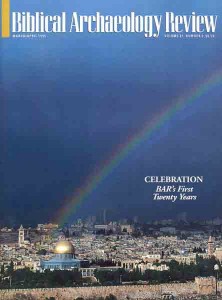
BAR recently published an article by Philip R. Davies in which he claims that the now famous six letters of the Tel Dan inscription, bytdwd, do not mean “the House of David” after all.a
The tone and content of the article are an impassioned bashing of those “Biblical Maximizers” who read into archaeological finds what is supposedly not there—in this case, a reference to the famed king of ancient Israel. In a book entitled In Search of ‘Ancient Israel,’ written prior to the discovery of the Tel Dan inscription, Davies argues that most of Israel’s history prior to the Babylonian Exile, as related in the Bible, is fictional, having been created during the Persian period (sixth-fourth centuries B.C.E.).
In one fell swoop of the shovel at Tel Dan, a major presupposition of Davies’s book has been severely damaged. Davies was faced with a decision—either he could admit that King David wasn’t invented by Persian-period scribes, or he could attempt to explain away the reference to “the House of David” as unrelated to the King David of the Bible. He chose the latter. This does not come as a surprise. Shortly after the discovery of the Tel Dan inscription, in a critique of Davies’s In Search of ‘Ancient Israel,’ Baruch Halpern commented,
Already a library member? Log in here.
Institution user? Log in with your IP address.

